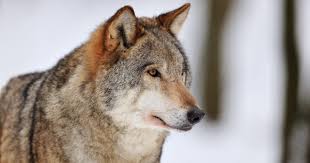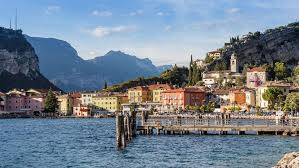Wolves in Europe: From conservation icon to political flashpoint

Brussels: For decades, the EU has used the grey wolf as an example of how nature can recover if it is given protection and space. Today, however, this success story is unravelling.
From Brussels to the forests of Belgium, Sweden, Italy and Poland, the wolf has been transformed from a conservation icon into a lightning rod in Europe’s culture wars, pitting city dwellers against rural communities, farmers against environmentalists, and fact against fear.
The grey wolf, once nearly eradicated in Western Europe, has made a remarkable comeback under the EU Habitats Directive and the Bern Convention. While the population was estimated at around 12,000 in 2012, primarily in Eastern Europe, this figure has grown to an estimated 21,500 today.
Wolves have now recolonised much of their former habitat in Western Europe, which demonstrates the effectiveness of legal protection.
However, legal protections started to be undermined in September 2022, when a wolf killed Ursula von der Leyen’s pony in Lower Saxony. Within weeks, the Commission’s decades-old rhetoric of “coexistence” was replaced by calls for control.
Backed by von der Leyen’s European People’s Party and allied groups, Brussels began a rapid rollback driven less by scientific evidence than political manoeuvring.
By December 2023, the Commission had formally proposed downgrading the wolf’s protection under EU and international law, paving the way for more culls. A year later, its status was lowered under the Bern Convention.
In spring 2025, the EU followed suit by reclassifying the species from “strictly protected” to “protected”.
The wolf has become a political flashpoint in Brussels and capitals across Europe, including Sweden, Italy, the Netherlands, the Czech Republic and Poland. In its wake, a steady stream of misinformation has flourished.
Anti-wolf rhetoric often relies on false claims, such as that wolves are deliberately released or crossbred with dogs, or that they pose a significant threat to human safety.
These narratives are amplified by rural-based political parties, anti-wolf groups, agricultural and hunting lobbies and conservative movements. Consequently, the wolf has become embroiled in a wider backlash against environmental regulation, portrayed as a symbol of urban interference and the restrictive rules imposed on rural life.
The modern chapter of the wolf in Belgium opened in 2018 with the arrival of Naya, a GPS-collared wolf from Germany. Shortly afterwards, GW998f settled in the Dutch Veluwe.
In both countries, these pioneers found mates and raised hopes of producing offspring, igniting heated disputes over land use, agriculture and rural identity in the process.
Although Naya was killed before she could raise offspring, Flanders responded decisively. Natuurpunt, WWF Belgium and government agencies launched the Wolvenplan Vlaanderen (Flemish Wolf Plan) and the Wolf Fencing Team Belgium, offering free advice, administrative assistance and practical support for predator-proof fencing.
This collaborative model, which links conservationists, farmers, hunters and local authorities, has reduced livestock losses and kept policy responses coordinated.
Although the Netherlands had a national wolf plan in place prior to the species’ return, its implementation was handed to the provinces, many of which were unprepared. Until 2025, the result was fragmented measures, inconsistent subsidies and fertile ground for misinformation.
In Flanders too, greater efforts are needed, says Landschap vzw, the organisation behind the Welkom Wolf campaign. The organisation has launched legal proceedings against the Flemish government, accusing it of failing to protect wolves on its territory.
The group alleges that the authorities are systematically breaching both European and Flemish wildlife conservation laws.
In Flanders, the wolf’s habitat is limited and fragmented by roads, resulting in high mortality rates from vehicle collisions. Wallonia, which has far greater habitat potential, still lacks permanent packs, possibly due to illegal killing or hunting pressure spilling over from France.
Without sustained investment in coexistence measures and safe wildlife corridors, the wolf’s return risks descending into ad hoc crisis management.
The survival of the wolf in Europe – now as much a political as an ecological challenge – will depend less on biology than on the political will to protect it.





